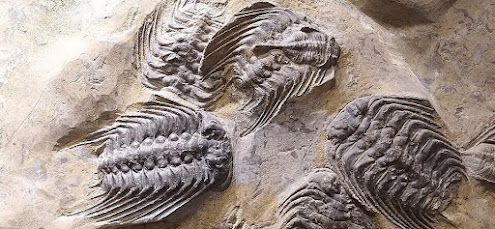 |
Layering two bilayer flakes of chromium triiodide
and twisting them a tiny amount offsets the chromium atoms
within the material and creates a more complex magnetic moment.
Image credit: Zhao Lab, University of Michigan |
Magnets are used in so many of our everyday objects including cell phones and in the strip of a credit card or a hotel key. They even power the engine in your vacuum.
And as most computers use magnets to store information, finding ever thinner magnets is key to faster, lighter electronics. Graphene, a material that is one atom thick, was discovered in 2004 and won the 2010 Nobel Prize in physics. While graphene is not magnetic itself, it triggered the interest of searching for atomically thin magnets.
In 2017, scientists found an ultrathin, magnetic material just three atoms, or one atomic unit, thick. But this material, called chromium triiodide, had a simple magnetic moment arrangement—the spin of the electrons within the material all aligned in the same direction, either up or down—which means it’s not able to store large amounts of information.
Now, University of Michigan physicist Liuyan Zhao and her team have developed a way to create a more complex magnetic moment arrangement in chromium triiodide, allowing this atomically thin material to store more information and to perhaps process information faster. Their results are published in Nature Physics.
“Over time, people began looking for smaller sizes and more complex forms of magnets in order to make our computers and electronics smaller, thinner and faster. To do this, the material that stores data or does information processing needs to also get smaller and smaller, while their magnetic forms should be more and more exotic,” Zhao said. “In very big, bulky materials, people find all kinds of magnetic forms called spin textures. So in this ultrathin material, we asked: Can we also create those kinds of complex spin textures so that we can store more information?”
To do this, Zhao and her team created an artificial sample by tearing a micron-sized (one millionth of a meter) flake of chromium triiodide into two. The flake of chromium triiodide is bilayer, which means the material is two atomic units, or six atoms, thick. Then, they layered one piece on top of the other and rotated it a tiny amount. Each flake is composed of a crystalline lattice structure, and when one structure is laid over another and rotated a small amount, the crystalline structures interfere with each other and form a periodic structure with a longer wavelength. This also creates an angular mismatch between the two flakes and leads to a superlattice with a longer period called a moiré superlattice.











.jpg)



.jpg)

